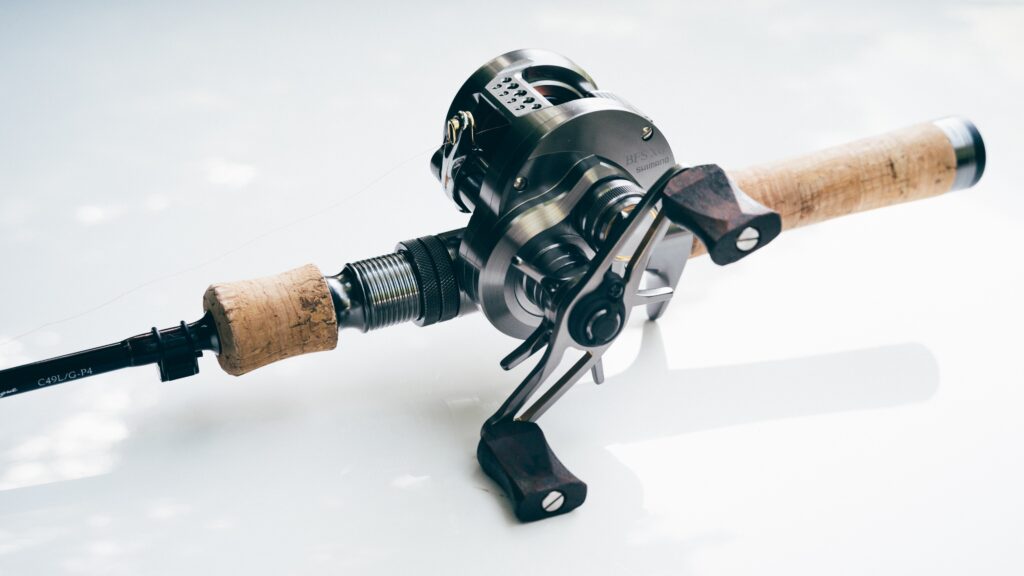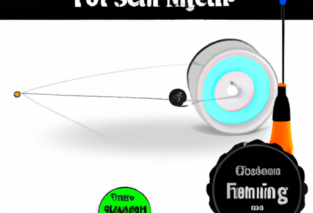In this comprehensive guide, you will find everything you need to know about different fishing reel types. Whether you’re a seasoned angler or just starting out, understanding the various reel options available can greatly enhance your fishing experience. From spinning reels to baitcasting reels, we will explore the features, benefits, and uses of each type, helping you make an informed decision when it comes to selecting the perfect reel for your fishing needs. So, grab your rod, settle in, and let’s explore the world of fishing reels together!

Spinning Reels
Overview
Spinning reels, also known as open-faced reels, are one of the most popular types of fishing reels among anglers worldwide. These reels feature a fixed spool that allows the line to be cast and retrieved easily. They are commonly used for both freshwater and saltwater fishing, making them versatile and suitable for various fishing scenarios.
Advantages
One of the major advantages of spinning reels is their ease of use. They are perfect for beginners or anglers who prefer a more straightforward fishing experience. With a spinning reel, you can cast your line with minimal effort and achieve good casting distance. The spinning reel’s design also allows for easy line management, reducing the chances of tangles or backlash.
Another advantage of spinning reels is their versatility. They can handle a wide range of fishing techniques, including casting, jigging, and trolling. Whether you’re targeting small panfish or going after larger game fish, spinning reels can accommodate various fishing styles and line weights.
Disadvantages
While spinning reels offer numerous advantages, they also have some drawbacks to consider. One of the main disadvantages is their reduced casting accuracy compared to baitcasting reels. Due to the spinning reel’s design, it may be challenging to achieve pinpoint accuracy when casting. This limitation may not significantly impact beginners, but more experienced anglers might find it frustrating.
Another disadvantage of spinning reels is their limited line capacity. Since the spool is stationary, its size is comparatively smaller than that of other reel types. This can be a limitation when targeting larger fish that may require a substantial amount of line to be spooled. Additionally, spinning reels are more prone to line twists and loops, which can lead to tangles and affect casting performance.
Common Uses
Spinning reels are commonly used in various fishing scenarios, making them a versatile choice for anglers. They are particularly popular for freshwater fishing, such as targeting bass, trout, and panfish. Additionally, spinning reels are an excellent choice for surf fishing and inshore saltwater fishing, allowing anglers to cast lures or bait into the waves with ease.
Overall, spinning reels are ideal for beginners, casual anglers, and those looking for a hassle-free fishing experience. They provide versatility, ease of use, and are suitable for a wide range of fishing techniques and environments.

Baitcasting Reels
Overview
Baitcasting reels, also known as casting reels or overhead reels, are a popular choice among experienced anglers. These reels offer precise casting control and are commonly used for freshwater fishing, particularly for targeting larger fish species.
Advantages
One of the significant advantages of baitcasting reels is their remarkable casting accuracy. With a bit of skill and practice, anglers can achieve precise casting distances and accurately place their lures or baits right where they want them. Baitcasting reels also allow for excellent control over the line, enabling anglers to manipulate the lure’s movement effectively.
Another advantage of baitcasting reels is their superior line capacity. These reels are designed to accommodate heavier line weights and can hold a substantial amount of fishing line. This is especially beneficial when targeting larger fish that may require a long battle and a significant amount of line to be spooled.
Disadvantages
Despite their advantages, baitcasting reels have a steeper learning curve compared to spinning reels. They require a bit of practice and skill to master the technique of casting without experiencing backlash or tangles. This can be frustrating for beginners or those who prefer a simpler fishing experience.
Another disadvantage of baitcasting reels is their higher price range compared to spinning reels. Due to their more intricate design and advanced features, baitcasting reels tend to be more expensive. This cost can be a significant factor for anglers on a budget or those who are not yet fully committed to the art of baitcasting.
Common Uses
Baitcasting reels are commonly used for freshwater fishing, especially when targeting larger fish species such as bass, pike, musky, or catfish. They are versatile enough to accommodate various fishing techniques like flipping, pitching, and casting heavy lures or baits. Baitcasting reels are also popular among anglers who enjoy bass tournaments or prefer a more precise and controlled fishing experience.

Spincasting Reels
Overview
Spincasting reels, often referred to as closed-face reels, are a type of fishing reel that combines the ease of use and simplicity of spinning reels with the design of baitcasting reels. These reels are enclosed in a protective case, making them user-friendly and suitable for beginners and kids.
Advantages
One of the main advantages of spincasting reels is their ease of use. They are specifically designed for beginners, children, or anglers who prefer a simplified fishing experience. Spincasting reels feature a push-button mechanism that allows for easy line release and retrieval, making them perfect for those who are new to fishing.
Additionally, spincasting reels are highly resistant to tangles and backlash. The protective case encloses the spool and line, significantly reducing the chances of line twists or loops. This makes spincasting reels ideal for individuals who want to focus on fishing rather than dealing with tangled lines.
Disadvantages
While spincasting reels offer simplicity and ease of use, they have some limitations that might not suit the preferences of experienced anglers. One of the main disadvantages is the reduced casting distance compared to spinning or baitcasting reels. The enclosed design of spincasting reels may restrict the line’s release speed, resulting in shorter casting distances.
Another disadvantage of spincasting reels is their limited line capacity. Due to their size and enclosed design, spincasting reels usually have lower line capacities compared to other reel types. This might pose a problem when targeting larger fish species that require more line.
Common Uses
Spincasting reels are commonly used by beginners, children, and casual anglers who value simplicity and ease of use. They are ideal for fishing in freshwater environments, such as ponds, lakes, or calm rivers. Spincasting reels are often chosen for recreational fishing or family outings where the focus is on enjoying the experience rather than advanced fishing techniques.

Fly Fishing Reels
Overview
Fly fishing reels are specifically designed for the unique demands and techniques of fly fishing. These reels are used in combination with fly rods to present lightweight artificial flies to fish in a delicate and controlled manner.
Advantages
One of the significant advantages of fly fishing reels is their smooth and precise drag system. A reliable and adjustable drag mechanism allows anglers to control the resistance applied to the line when a fish is hooked. This is crucial for managing the fight and preventing the line from breaking under the strain of a powerful fish.
Fly fishing reels also offer a large arbor design, which provides a faster line retrieval rate. This is beneficial when targeting fast-swimming fish or when needing to quickly recover line during a fight. The large arbor design also reduces line memory and eliminates excessive coiling, ensuring smooth and unrestricted casting.
Disadvantages
One of the main disadvantages of fly fishing reels is their complexity and cost. These reels tend to be more expensive than other types of fishing reels due to their specialized design and construction. Additionally, the various components, including the fly line, leaders, and tippets, add to the cost and complexity of fly fishing.
Another disadvantage is the limited versatility of fly fishing reels. Unlike spinning or baitcasting reels, fly fishing reels are designed specifically for fly fishing and may not be suitable for other fishing techniques. This means that anglers who engage in various fishing styles might need to invest in additional reels for different purposes.
Common Uses
Fly fishing reels are primarily used for fly fishing, a technique that involves presenting lightweight artificial flies to fish. They are commonly used in freshwater environments, such as rivers, streams, and lakes, but can also be used for saltwater fly fishing. Fly fishing reels are popular among anglers who enjoy the artistry and precision of fly fishing and appreciate the focus on presentation and delicacy.






